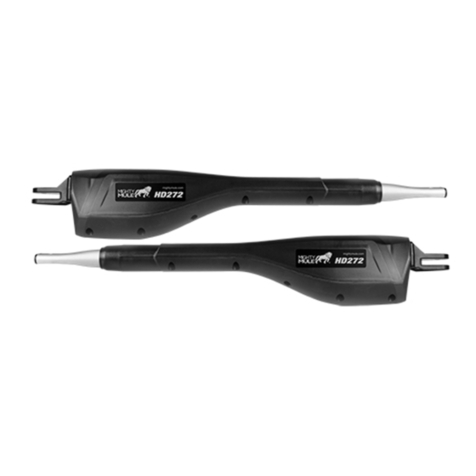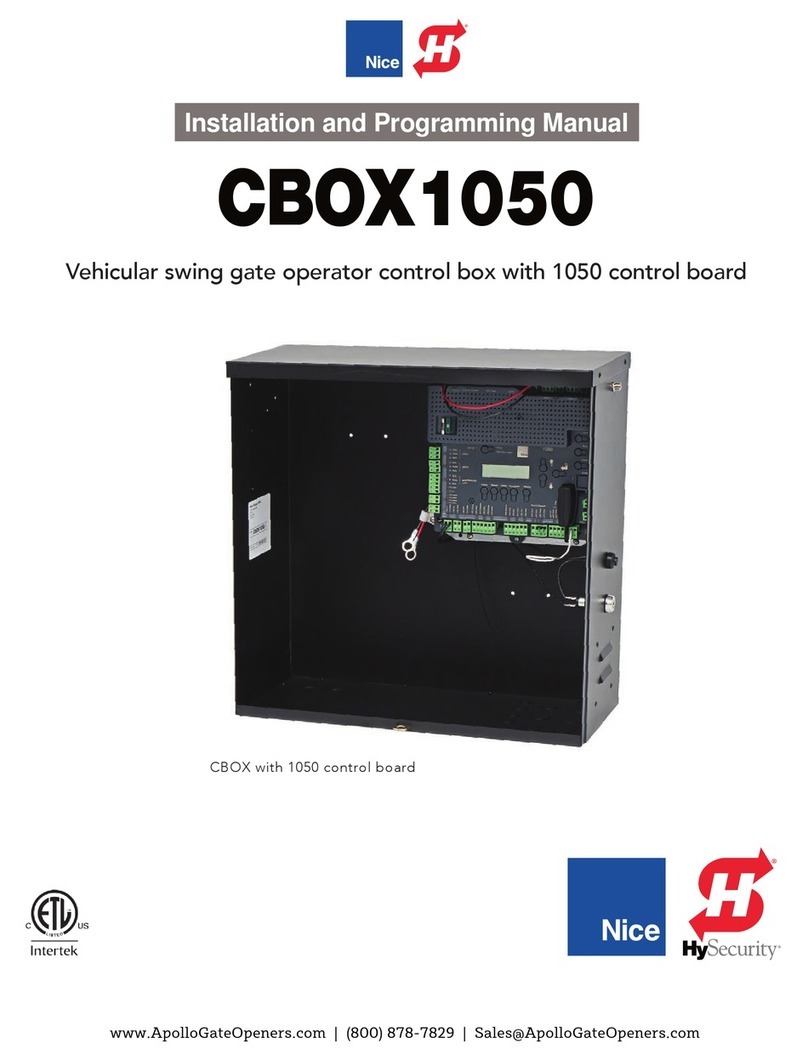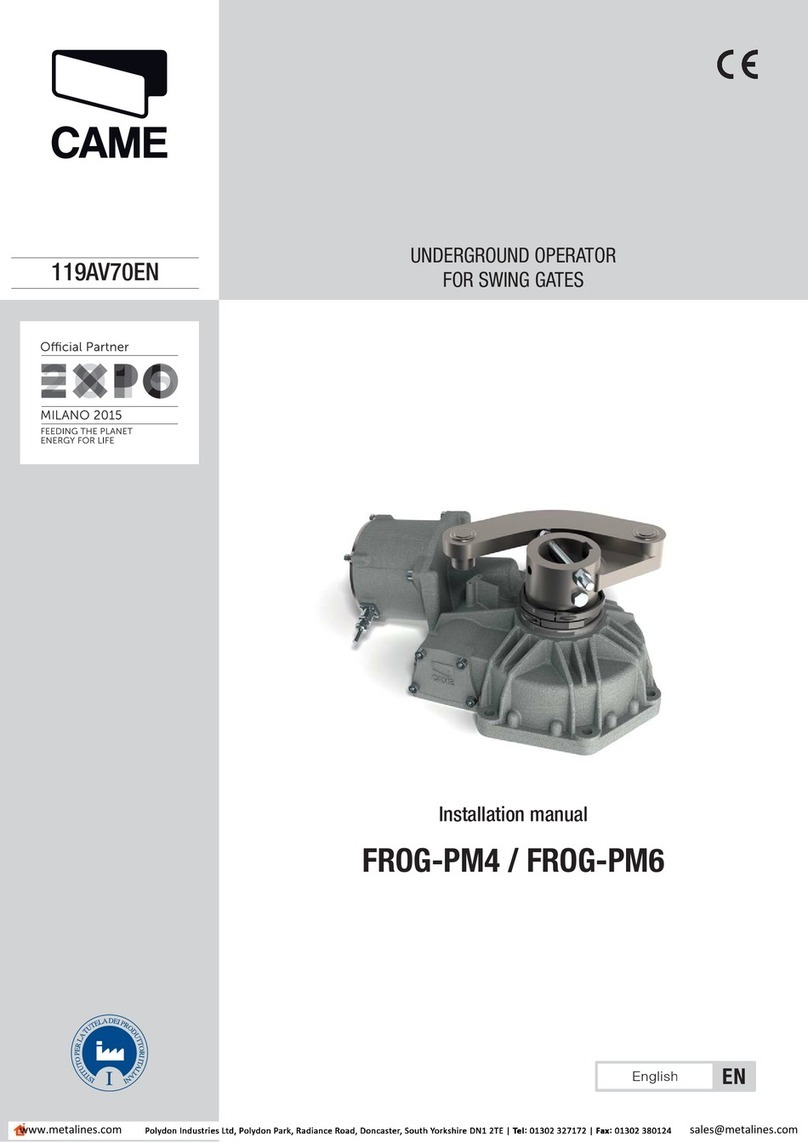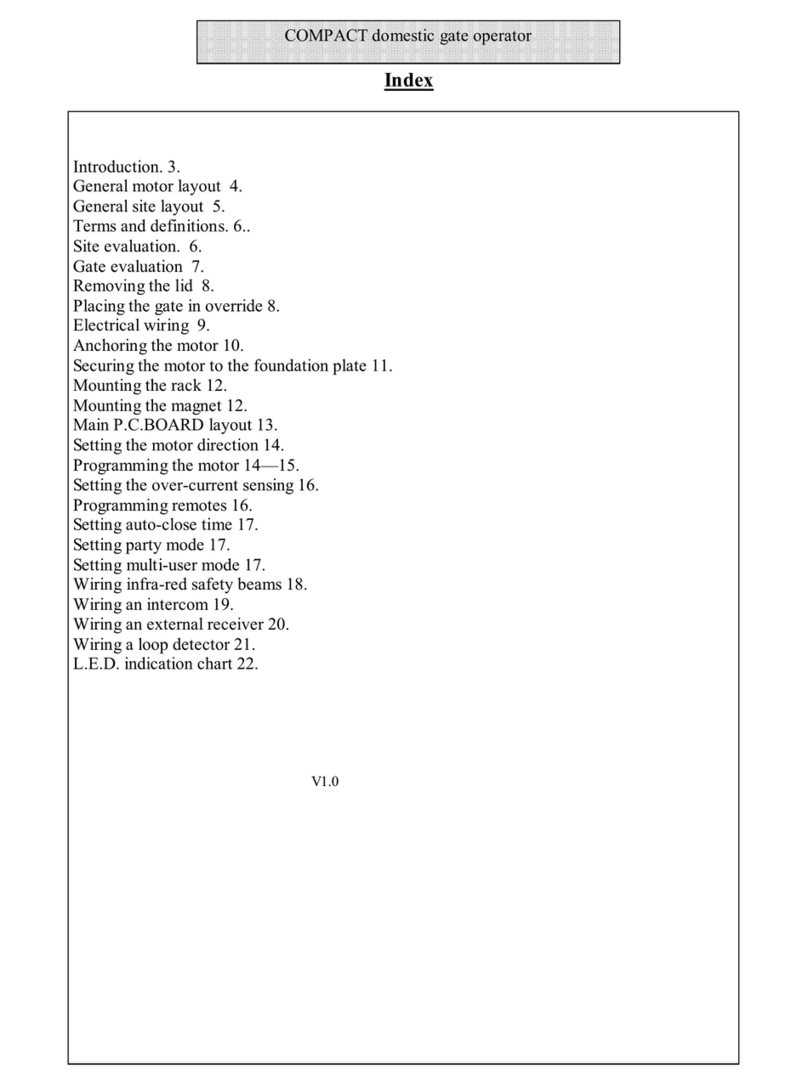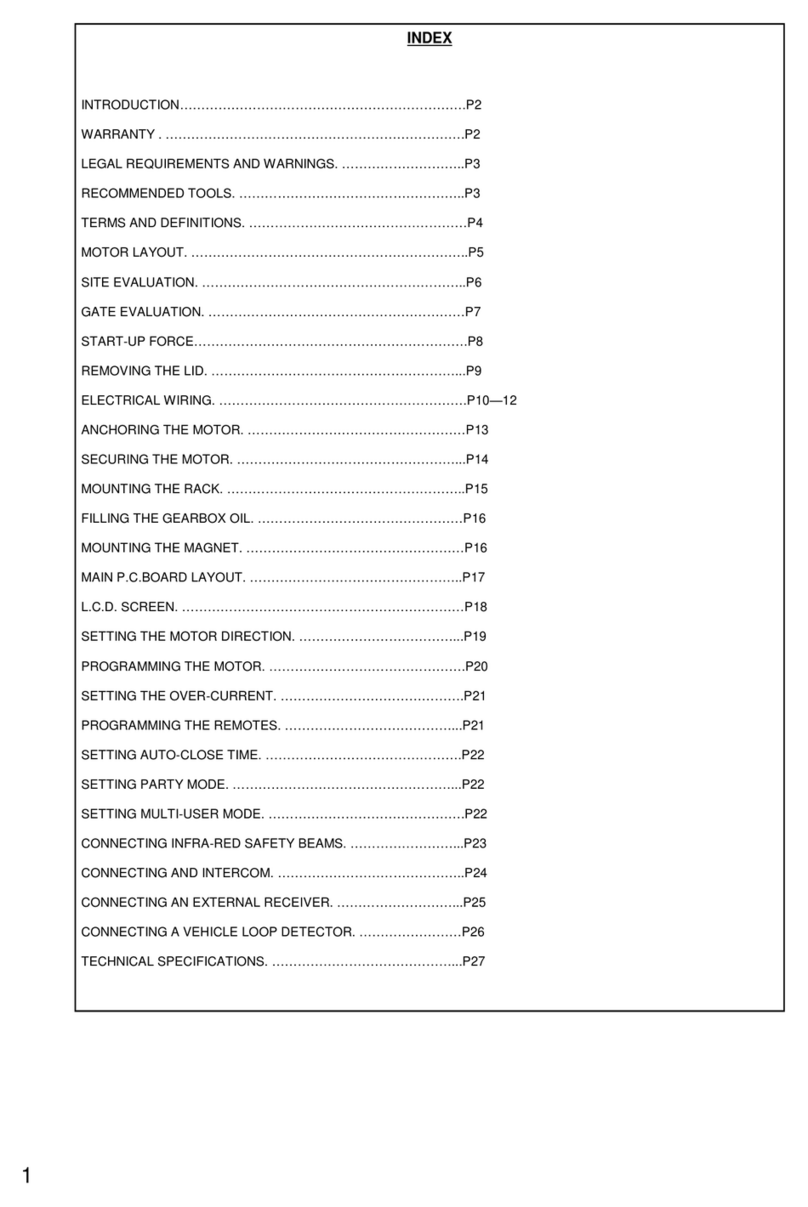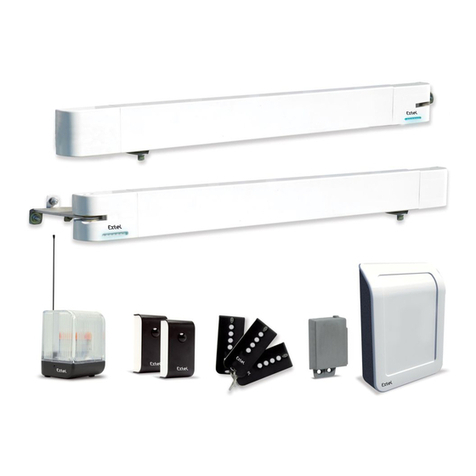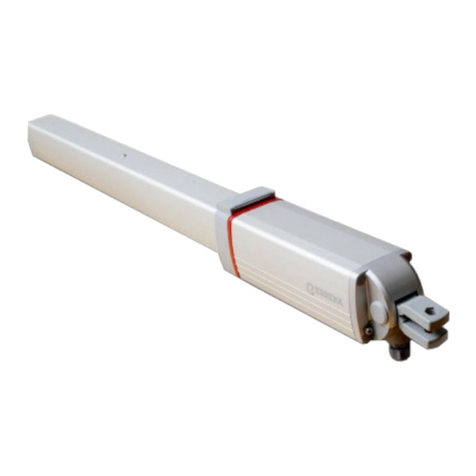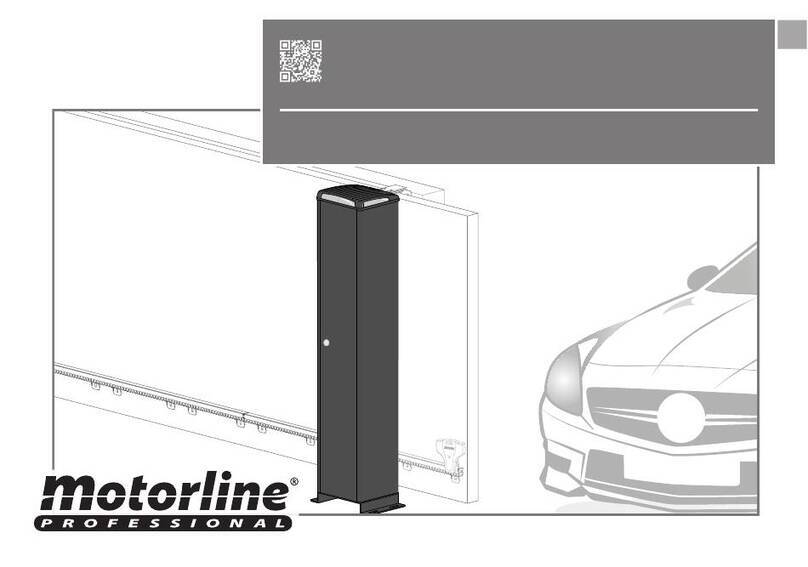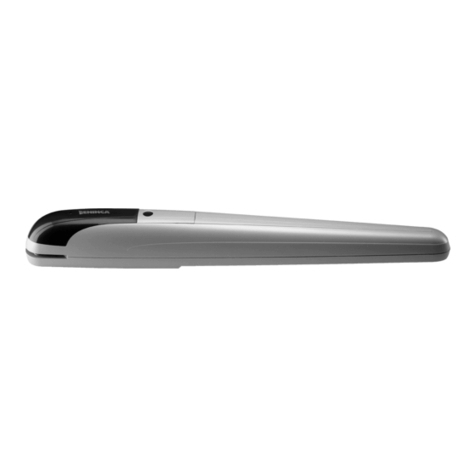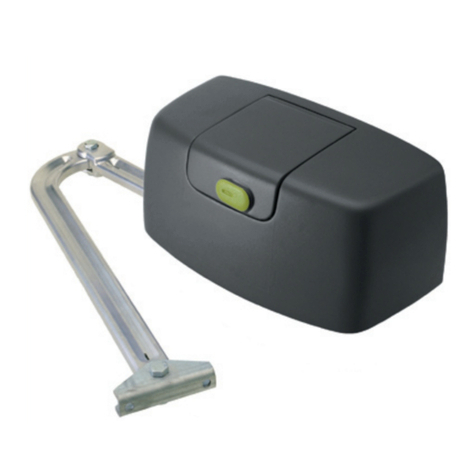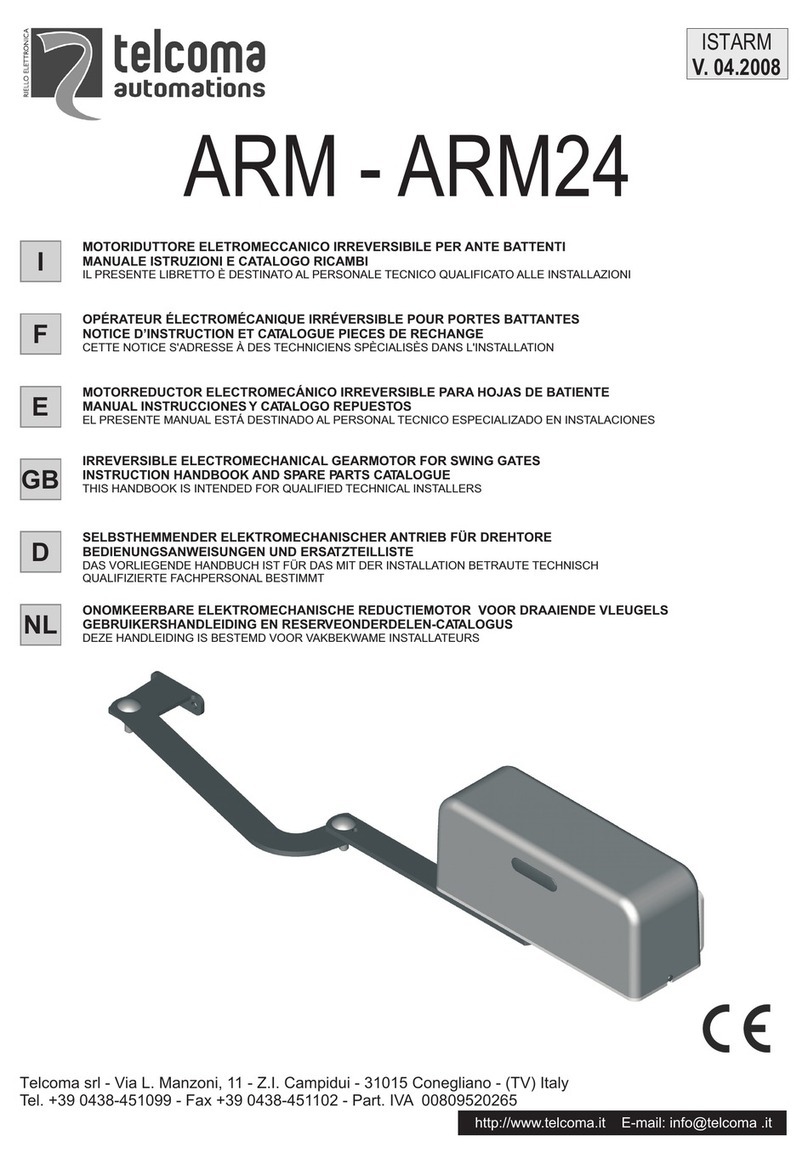4
DACE is a proven leader in the manufacturing of automac gate & garage operators and strives to manufacture
high quality products using the latest technology. We are constantly working on upgrading our products to bring
you, our clients, products of the nest quality.
We strongly recommended using the services of an experienced gate installer to install your gate opera-
tor but if you intend installing the operator yourself, the manual must be read carefully before any
installaon begins.
While we have taken all reasonable steps to ensure that your gate operator is safe to install and use, it must be
noted that your gate is a heavy moving piece of equipment and can cause serious damage or injury if it strikes an
object or person. Your gate operator has built in electronic collision sensing which will make the gate stop and
reopen if it strikes an object. This does mean however, that the gate will actually strike the object before it stops.
It is because of this that we strongly recommended that DuraOpcs Safety Beams are installed to reduce the risk
of the gate striking an object.
The installaon of beams does not guarantee that the moving gate will not strike an object in it’s path.
Check the following items before installing the operator:
That the rail is level – the gate must not move on its own at any stage (discuss opons available to you with
your supplier if the rail is not level).
That the wheels are turning freely and are not jammed.
That the gate is not bent or bowed in any way.
That the rail has sucient end stops so that the gate can never run o the end of the rail.
That the portal is constructed in such a way that the gate can not fall over.
That the top rollers are turning freely and are not jammed.
That the an li device is sucient in order to stop the gate from being lied o the rail.
That the gate mass or start-up force does not exceed the maximum as stated in the specicaons.
That the gate does not jam in the catch bracket when closing or opening.
The gate must not exceed the maximum number of operaons stated in the specicaons.
Extreme care should be taken when automang a gate that is fully cladded, as wind resistance can cause the
gate to not close properly.
Only when all the above points are sasfactory should you go ahead with installing the gate operator. If a gate
causes damage or injury the installer of the equipment may be held liable.
DO NOT CONNECT MAINS VOLTAGE DIRECTLY TO THE CONTROLLER
If you intend to run AC directly from the building mains supply to the transformer, the wiring should be
done by a qualied/registered electrician. This is a legal requirement and failure to do so may lead to
non-compliance of property or law suits against the property owner in the event of an accident.
When running mains supply to the gate, it is recommended that you contact your local E.C.A. (Electrical
Contractors Associaon) in order to obtain the legal wiring regulaons relevant to the region in which you
live.
Electrical shock can occur while installing this equipment
Injury or death by electrocuon may lead to law suits against the installer/homeowner.
All wiring must be run in conduit. The supply wires must be run separate to any other wiring.
Underground mains supply must be run in armoured cable.
Under no circumstances may Communicaon cable, Ripcord or Cabtyre be used for 220V/240V mains
connecons.
Ensure that all electrical power is switched o before any electrical connecons are made.
Do not open, tamper or modify any of the electronic components of this equipment in any way.
Do not aempt to repair the equipment, this should only be done by a qualied DACE technician.
DACE will not be held liable for any accident / incident resulng in damage, injury or death ensuing from the
incorrect installaon of the automac gate operator.
Although these operators have built-in collision sensing, substanal damage can sll occur. For this reason
DuraOpcs Safety Beams should be used on all installaons.
For safety reasons, the Ulma RT 25/50 will only close at the maximum speed of 50 meters per minute if
there are safety beams connected to the operator.
Do not allow children to play near or with any gate, gate operator or remote control.
It is the responsibility of the installer to ensure that the gate is in good working condion before automang
the gate. Connues……...
INTRODUCTION & RECOMMENDATIONS
